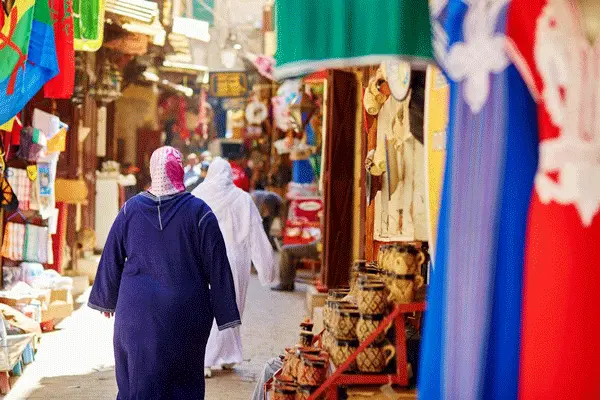A journey to Morocco is more than just sightseeing; it's an immersion into a deeply rooted and fascinating culture. Moroccan culture is a vibrant blend of indigenous Berber, Arab, and European influences, creating a unique identity that is both ancient and modern. To truly appreciate your Morocco trip, understanding the local customs, traditions, and way of life will enrich your experience and foster deeper connections with the warm and welcoming Moroccan people.
The Heart of Morocco: Hospitality and Mint Tea
At the very core of Moroccan culture and customs is hospitality. The Moroccan people are renowned for their warmth and generosity towards guests. You will likely experience this firsthand through the ritual of mint tea. More than just a beverage, "Berber whiskey," as it's affectionately known, is a symbol of friendship and welcome. It is considered impolite to refuse a glass of tea when offered. The ceremony of pouring the sweet, fragrant green tea from a height into small glasses is a form of art and a gesture of respect that you will encounter in souks, riads, and local homes.
Family and Community Life
Family life in Morocco is paramount. The family unit is the most important social structure, with strong bonds and a deep respect for elders. It's common for multiple generations to live together or in close proximity. This strong sense of community extends outwards, creating a society where neighbors know and support one another. As a traveler, you are a guest in this wider community, and showing respect for these values will be greatly appreciated.

The Moroccan Dress Code: What to Wear in Morocco
One of the most frequent questions from travelers concerns the Morocco dress code. Morocco is a Muslim country, and while it is more liberal than many others, modesty is still highly valued, especially outside of major tourist resorts. Understanding what to wear in Morocco is a key sign of respect.
What Should Women Wear?
For women, the general guideline is to cover your shoulders, cleavage, and knees. This doesn't mean you need to be completely covered, but it's wise to avoid very short skirts, shorts, and low-cut tops. Loose-fitting linen pants, long skirts or dresses, and t-shirts or three-quarter sleeve tops are perfect. A light scarf or pashmina is an incredibly versatile accessory; you can use it to cover your shoulders when entering a mosque or for extra modesty when needed. This approach is especially important in more rural areas and during the holy month of Ramadan.
What Should Men Wear?
The dress code is more relaxed for men, but modesty is still appreciated. T-shirts and long shorts are generally acceptable in cities and tourist areas. However, when visiting religious sites or more traditional areas, long trousers are a more respectful choice. While you'll see many tourists in shorts, you'll notice that local men, regardless of age, almost always wear long pants.
The Indigenous Soul: Understanding the Berber (Amazigh) People
You cannot fully understand Moroccan culture without acknowledging the ancient heritage of the Berber people (or Amazigh, as they call themselves, meaning "free people"). They are the indigenous people of North Africa, with a unique language, flag, and rich traditions that predate the arrival of the Arabs. The Berber people of Morocco are not a single group but a collection of tribes, particularly prominent in the Atlas Mountains and the Sahara Desert. Their influence is everywhere, from the intricate patterns on Moroccan rugs and textiles to the names of villages and the delicious, slow-cooked tagines that are a staple of the cuisine.
"Staying with a Berber family in the Atlas Mountains was the most incredible experience of our trip. They welcomed us into their home, shared their food, and taught us so much about their way of life. It was a humbling and beautiful insight into the true heart of Moroccan culture."
FAQ: Moroccan Culture & Customs
Is it okay to take pictures of people in Morocco?
Always ask for permission before taking a photo of a person, especially women and in rural areas. Some people, particularly older generations, may be uncomfortable with it. In busy tourist areas like Jemaa el-Fnaa, street performers and snake charmers will expect a small payment if you photograph them.
What are some key etiquette tips for travelers?
Use your right hand for eating and greeting, as the left hand is considered unclean. Dress modestly, especially when visiting religious sites. Be prepared to remove your shoes when entering a home or a mosque. Avoid public displays of affection. If you are invited to a Moroccan home for a meal, it is a great honor; accept graciously and perhaps bring a small gift of pastries or sugar.
What is the main religion in Morocco?
The official religion of Morocco is Islam, and it plays a central role in daily life. You will hear the call to prayer from mosques five times a day. While Moroccans are generally tolerant, it's important to be respectful of their religious practices. For example, during Ramadan, avoid eating or drinking in public during fasting hours.